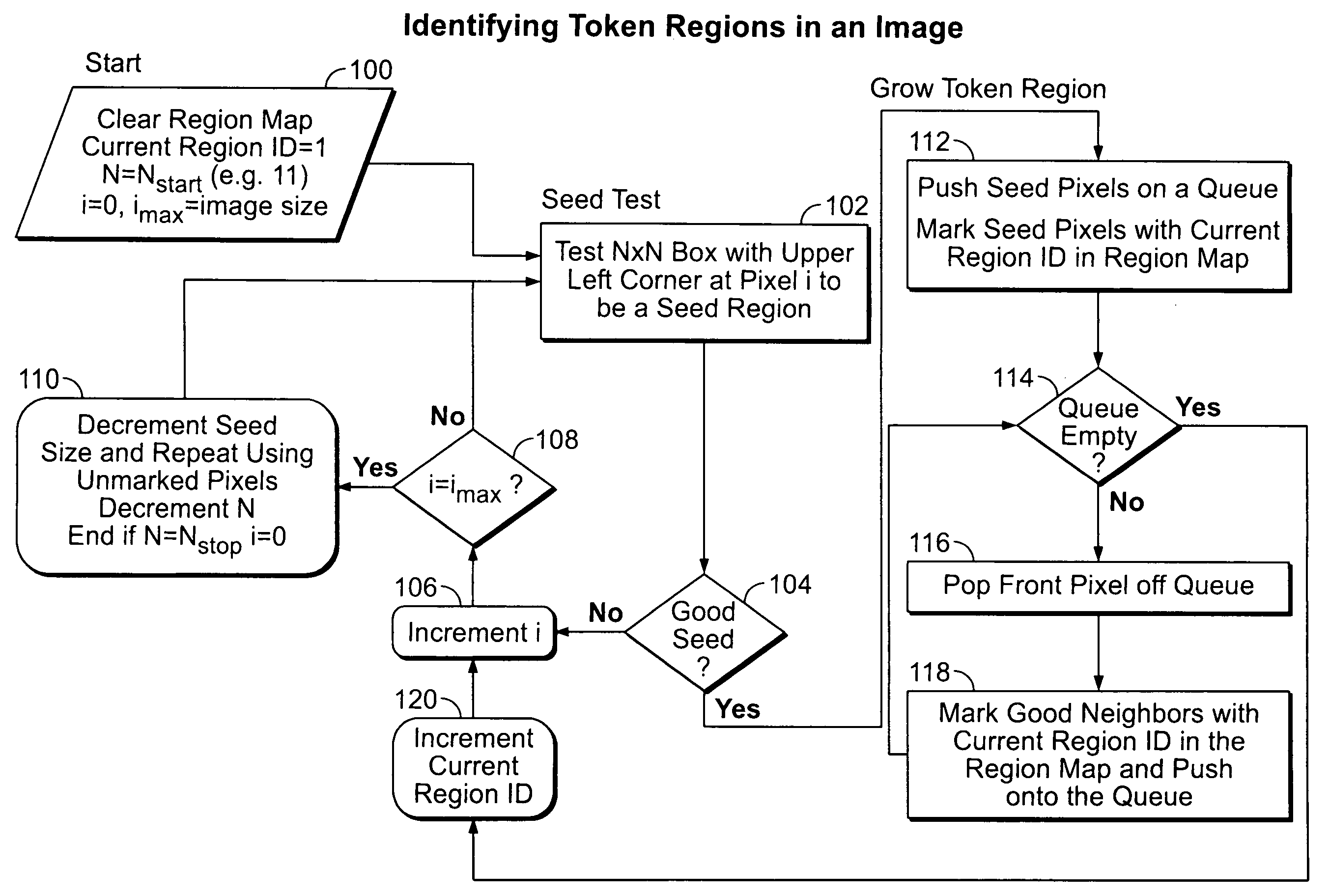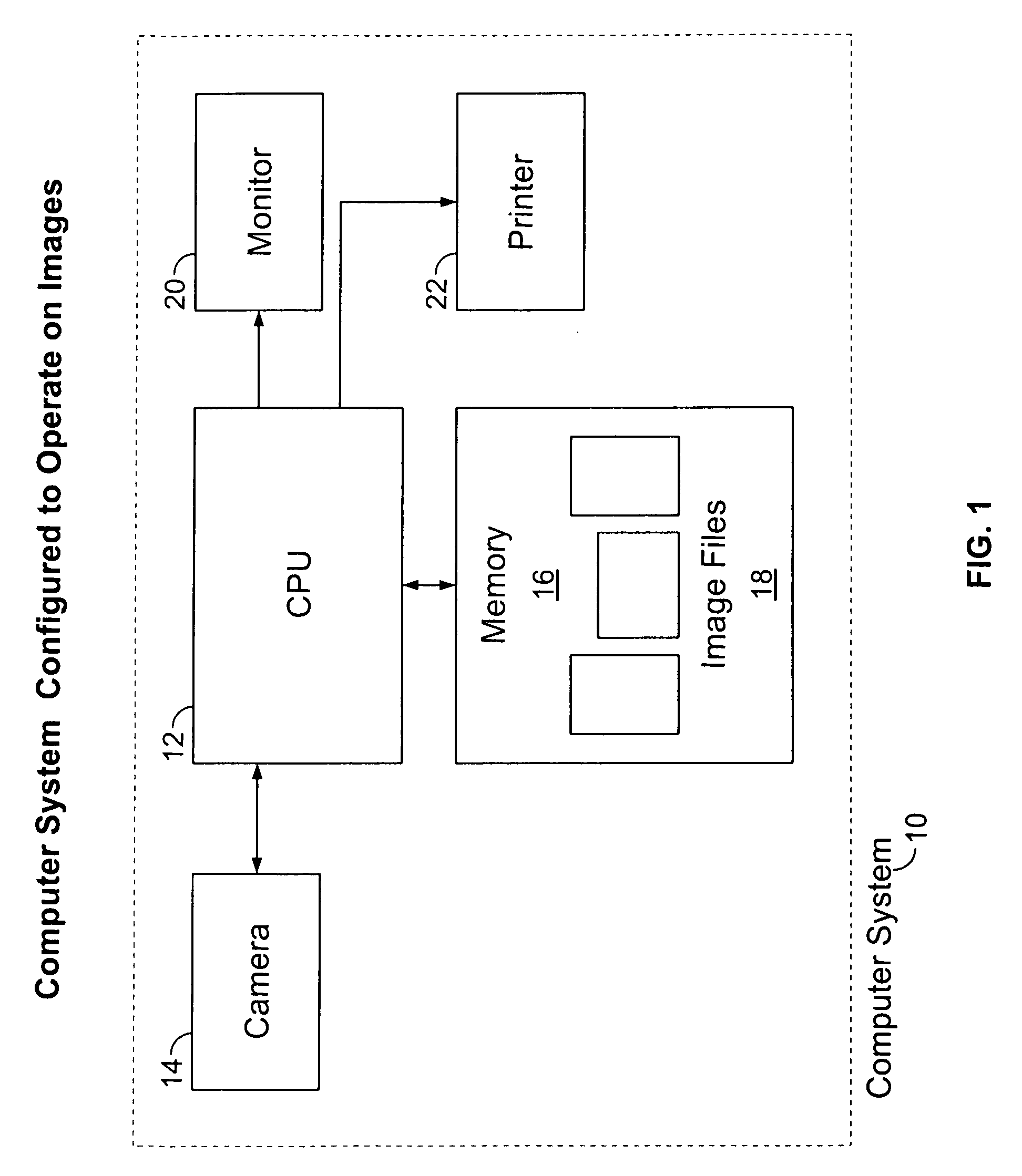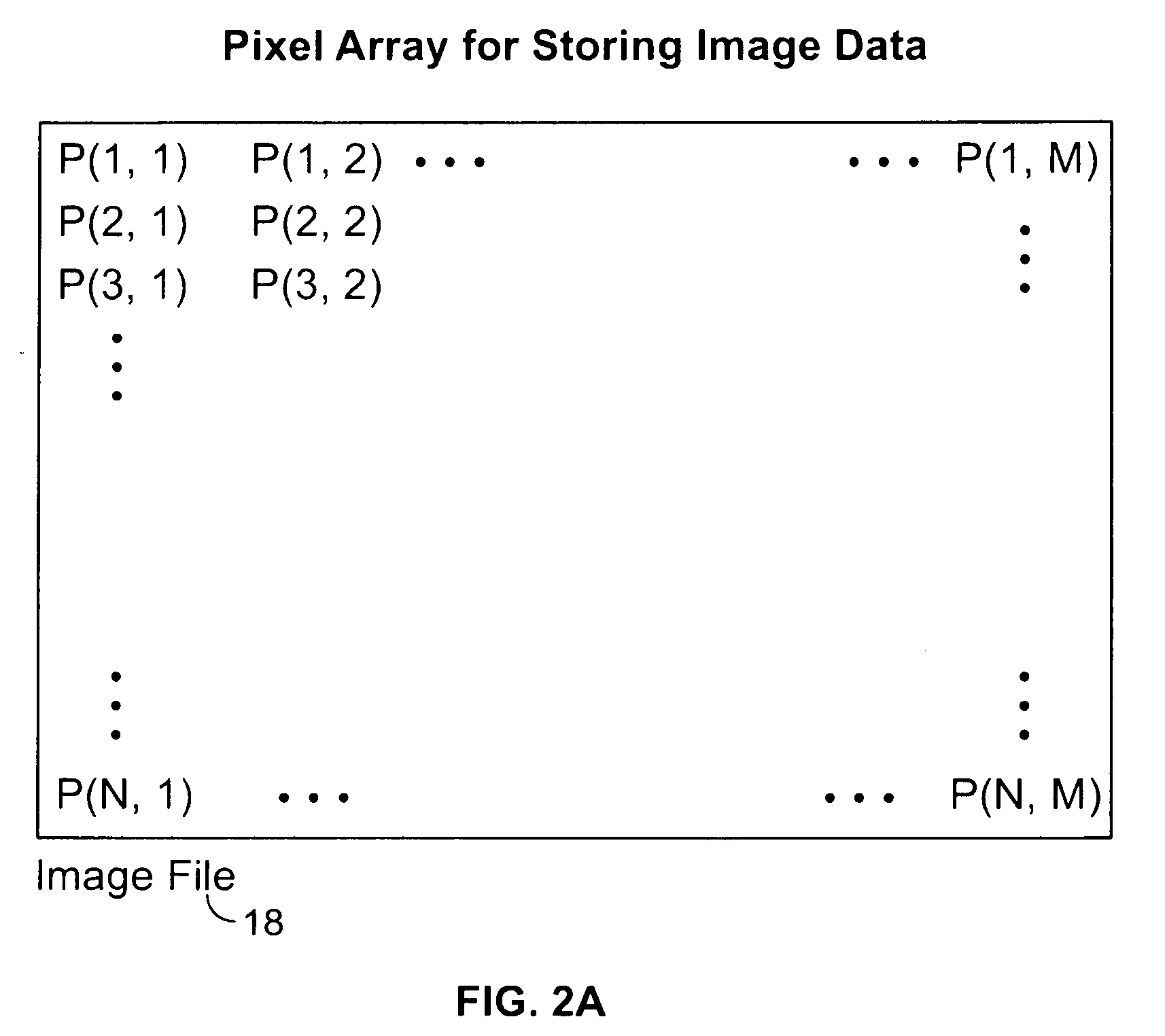Image segregation system with method for handling textures
a texture and image segregation technology, applied in image analysis, image enhancement, instruments, etc., can solve the problems of significant possibilities of false positives and false negatives in shadow recognition, and achieve the effect of accurately and accurately identifying illumination and material aspects
- Summary
- Abstract
- Description
- Claims
- Application Information
AI Technical Summary
Benefits of technology
Problems solved by technology
Method used
Image
Examples
Embodiment Construction
[0022]Referring now to the drawings, and initially to FIG. 1, there is shown a block diagram of a computer system 10 arranged and configured to perform operations related to images. A CPU 12 is coupled to a device such as, for example, a digital camera 14 via, for example, a USB port. The digital camera 14 operates to download images stored locally on the camera 14, to the CPU 12. The CPU 12 stores the downloaded images in a memory 16 as image files 18. The image files 18 can be accessed by the CPU 12 for display on a monitor 20, or for print out on a printer 22.
[0023]Alternatively, the CPU 12 can be implemented as a microprocessor embedded in a device such as, for example, the digital camera 14 or a robot. The CPU 12 can also be equipped with a real time operating system for real time operations related to images, in connection with, for example, a robotic operation or an interactive operation with a user.
[0024]As shown in FIG. 2a, each image file 18 comprises an n×m pixel array. E...
PUM
 Login to View More
Login to View More Abstract
Description
Claims
Application Information
 Login to View More
Login to View More - R&D
- Intellectual Property
- Life Sciences
- Materials
- Tech Scout
- Unparalleled Data Quality
- Higher Quality Content
- 60% Fewer Hallucinations
Browse by: Latest US Patents, China's latest patents, Technical Efficacy Thesaurus, Application Domain, Technology Topic, Popular Technical Reports.
© 2025 PatSnap. All rights reserved.Legal|Privacy policy|Modern Slavery Act Transparency Statement|Sitemap|About US| Contact US: help@patsnap.com



